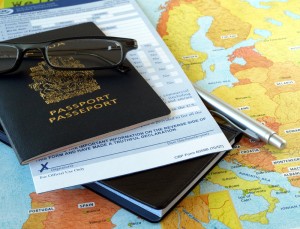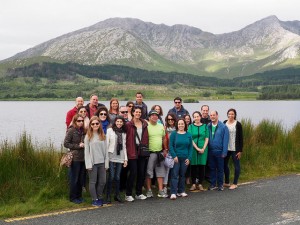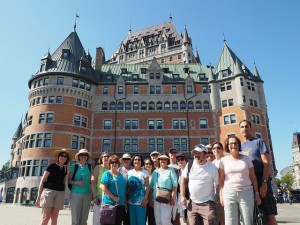There’s so much advice today on how to find rock-bottom airfares that it can be difficult to filter out the noise. Here are three flight-booking tips, though, that I can almost guarantee you weren’t aware of. They’re outlier tips — meaning they’ll require a bit of time and energy (and, in one case, flexibility) to employ — but when used properly, they’ll almost definitely save you a big chunk of money.
1. Get (almost) free travel when using your miles.
United Airlines has the most generous and flexible policy on round-trip, international award tickets (flights booked with miles), allowing for a stopover and two open jaws (flying into one airport and out of another). This allows for many possibilities if you’re looking to visit more places than a regular round-trip ticket would entail — including a way to essentially travel free one-way, anywhere in the United States.
Let’s say you’re flying from New York to Berlin this fall: A round-trip ticket on United will cost 60,000 miles plus taxes and fees. But what if you’d like to spend a little time in London, too? You can book a round-trip flight to Berlin with a three-day stopover in London built into the ticket. That will still cost 60,000 miles, even with the stopover.
Now let’s say you make that same trip from New York to Berlin, but instead of returning on the same route, you book an open jaw so you can return from Prague to New York. The cost to you is the same: 60,000 miles. In this scenario, you’re responsible for getting from Berlin to Prague on your own.
An even better way to take advantage is to use both of the permitted open jaws. Instead of flying from New York to Berlin and open-jawing from Prague back home, you can also open-jaw at your destination. If you’ve been meaning to visit your mother in Chicago (hi, Mom!), you can fly to Berlin, then from Prague to Chicago on the return for the same 60,000 miles. You pay to get back to New York.
You can get even more creative by combining the stopover and open jaws. Remember that initial sojourn in London? The above itinerary with two open jaws — New York to Berlin, and Prague to Chicago — can have a stopover in London built into it for, that’s right, the exact same number of miles.
Here’s where things get fun: You can manipulate these rules to essentially wrangle a free one-way ticket anywhere in the United States. Let’s take our original itinerary, New York to Berlin. You can still use one of your open jaws and return to New York from Prague. (We’ll have to forgo the stop in London — we’re using our stopover stateside.) Now, use New York as your stopover, and resume your trip anywhere in the country (using the second open jaw) at any point in the coming year. You read that right: Even if you’ve lived in New York City your entire life, you can treat it as your stopover, and resume that trip anytime, anywhere in the United States, for up to a year later.
Let’s say you know you want to go to Alaska next spring: Fly New York to Berlin, Prague back to New York, and then New York to Anchorage in, let’s say, April 2017. The cost will be — you guessed it — 60,000 miles. You can spend a few more miles and go somewhere like Honolulu or Cancún. That will run you slightly more — 65,000 miles — but it’s still a great bargain to fly to Hawaii or Mexico for only 5,000 extra miles.
2. Use the local currency.
You may not speak a foreign language, but that doesn’t mean you can’t use the local version of an airline’s website to get a discount. Savings can be substantial if you purchase a ticket in local currency, as opposed to U.S. dollars. Looking on the American portal for Norwegian Air Shuttle, the low-cost European carrier (norwegian.com/us), I found a round-trip ticket from Kennedy Airport in New York to Oslo for $688.30 — a decent price.
I then looked on the website for Norway-based passengers (norwegian.no) and searched for the same flight. It takes some work — there are lots of o’s with slashes through them, and you’ll need to know that “hvor vil du dra” means roughly “destination,” but I found it simple enough to negotiate. (Tip: Keep two browser tabs open, the Norwegian and English versions. Then you can compare if you get stuck. Google translate, for whatever reason, works on the initial landing page then stops working once you’re actually booking.
I found the exact flight for 4,394 Norwegian kroner, about $538. That’s a substantial difference — $160, or 23 percent. You’ll need to create an account, which I recommend you do on the United States site first. Also, use a credit card that doesn’t have a foreign transaction fee — you don’t want that eating into your savings.
3. Book at the last minute.
The conventional wisdom is to book tickets well in advance — preferably at least two weeks, otherwise you’ll pay many times what you ordinarily would. This is no longer the case: Priceline.com now gives steep discounts on next-day — and even same-day — flights within the United States. (This is available for some international routes, too, but I’ve found the savings aren’t as consistent.)
This, of course, requires flexibility. You’re always rolling the dice with Priceline: You won’t know exactly when you leave, or the airline you’re flying, until you commit to buy. But you do get some information: You’re guaranteed a nonstop or one layover and you typically get a window for arrival and departure times. You’ll also receive a warning (a little moon-and-stars icon) if your flight could be a redeye.
As I’m writing this, the lowest published next-day, round-trip ticket from Boston to Los Angeles costs a little over $500. By booking a Priceline deal, you can buy that trip for less than $360. Next-day from Seattle to Dallas is currently $428, round-trip. On Priceline it’s $285, and you’re guaranteed a departure between 10 a.m. and 6 p.m., maximum one layover.
Booking same-day can yield even greater savings and, ironically, greater control over when you leave. The current lowest published price for a same-day New York to Los Angeles trip is nearly $900. On Priceline it’s $428, saving you over 50 percent. Best of all, depending on what time of day you book, you can more closely deduce your flight times. If you book your same-day ticket in the early afternoon, you will get only flights that depart after you book. Be ready to get going to the airport immediately, however. (Good luck with the T.S.A.!)
I’ve booked Los Angeles to New York tickets on two occasions, same-day, and paid around $350, saving hundreds of dollars. In both instances, I’ve gotten nonstop flights on Delta. Booking at the last second isn’t optimal, and this is by no means a recommendation of the practice — I’m simply pointing out that, if something last-minute comes up, you’re not doomed to pay exorbitant prices. In fact, you may actually end up paying less than if you had booked ahead.
By Lucas Peterson, edited from nytimes.com













































